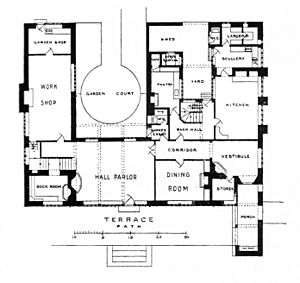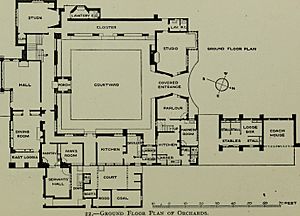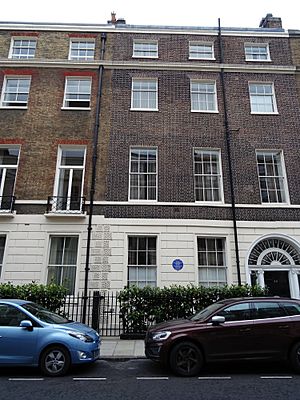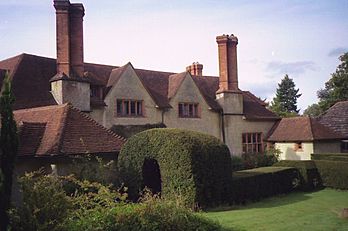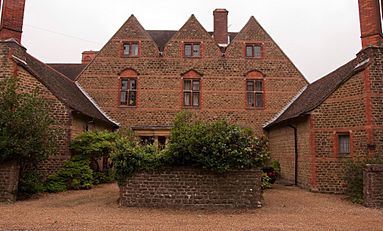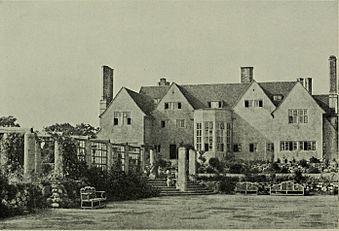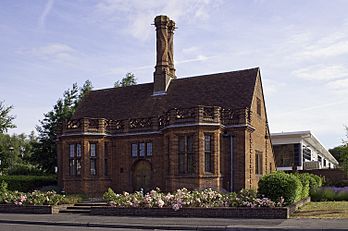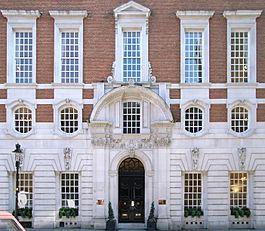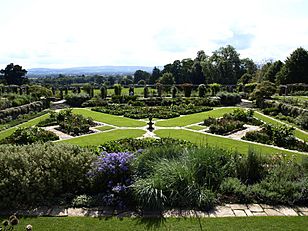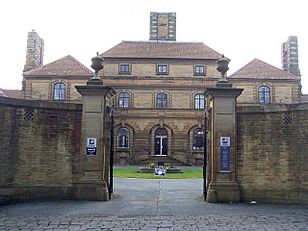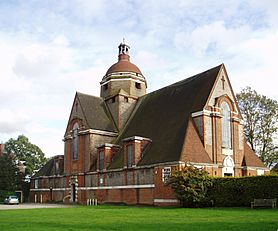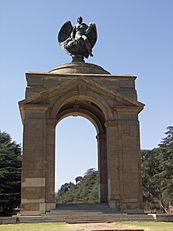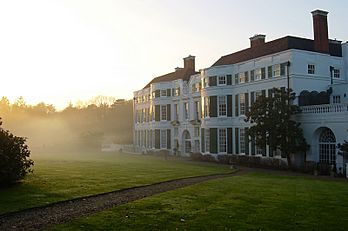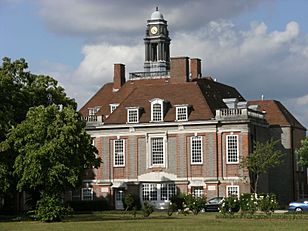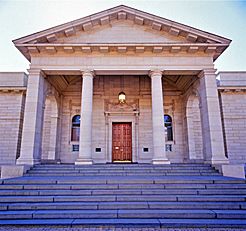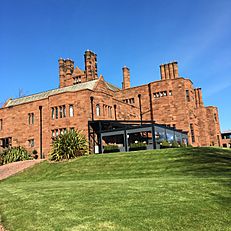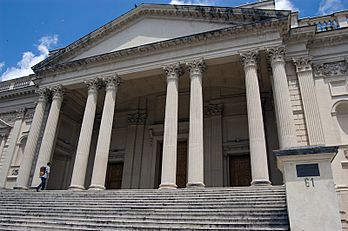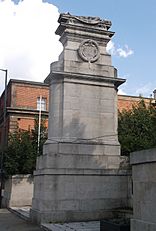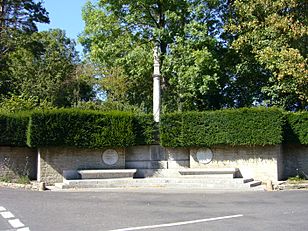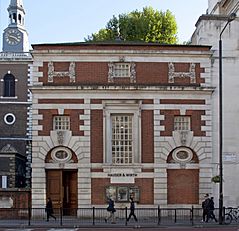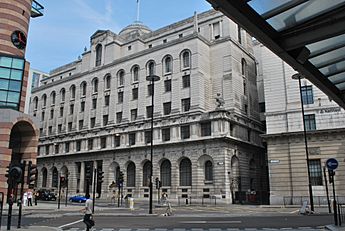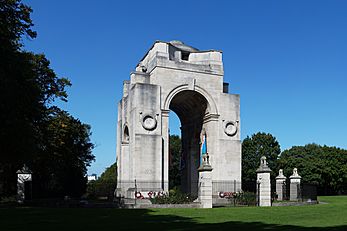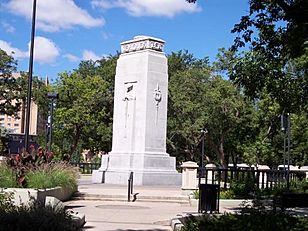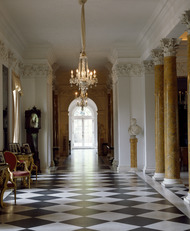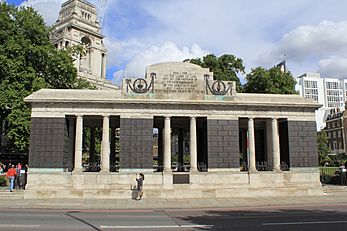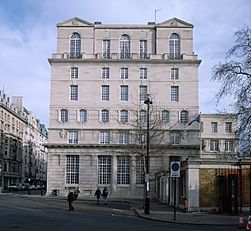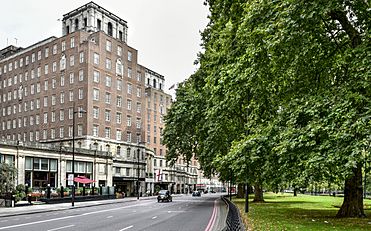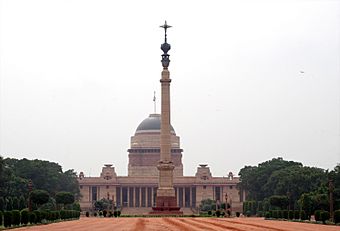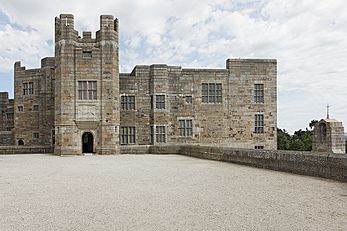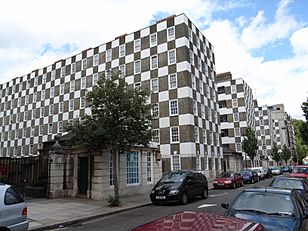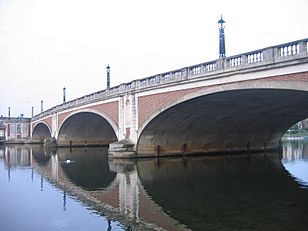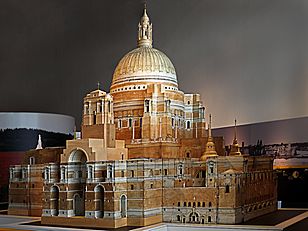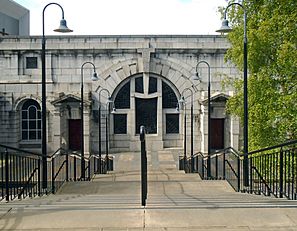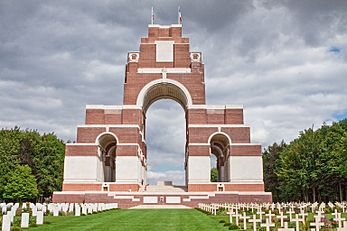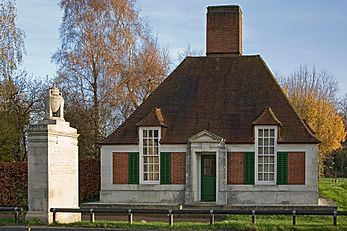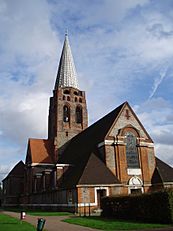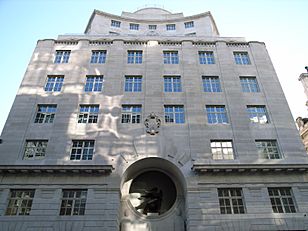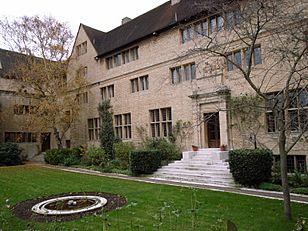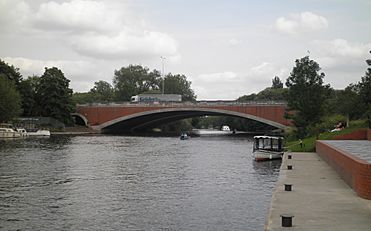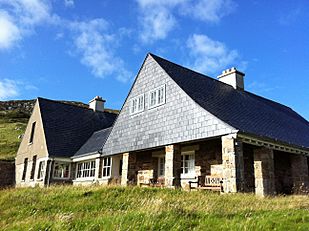Edwin Lutyens facts for kids
Quick facts for kids
Edwin Lutyens
|
|
|---|---|
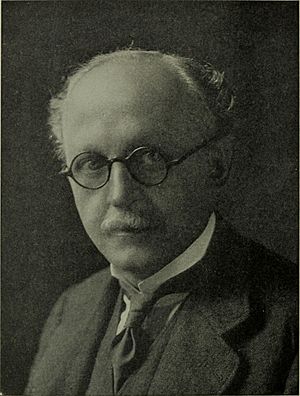 |
|
| Born |
Edwin Landseer Lutyens
29 March 1869 Kensington, London, England
|
| Died | 1 January 1944 (aged 74) Marylebone, London, England
|
| Alma mater | Royal College of Art |
| Occupation | Architect |
| Spouse(s) |
Lady Emily Bulwer-Lytton
(m. 1897) |
| Children | 5 |
| Buildings |
|
| Projects | New Delhi |
Sir Edwin Landseer Lutyens (born March 29, 1869 – died January 1, 1944) was a famous English architect. He was known for taking old architectural styles and making them new and useful for his time. He designed many large country homes, important war memorials, and public buildings. Many people thought he was one of the greatest British architects ever.
Lutyens played a very important part in designing and building New Delhi, which became the capital city of India. Because of his work, New Delhi is sometimes called "Lutyens' Delhi". He worked with Sir Herbert Baker to design many famous buildings there, like the India Gate and the Viceroy's House, which is now called the Rashtrapati Bhavan. Some of his designs were even inspired by traditional Indian architecture.
Contents
Early Life and Training
Edwin Lutyens was born in Kensington, London. He was one of thirteen children. He grew up in Thursley, Surrey. He studied architecture at the South Kensington School of Art in London from 1885 to 1887.
After college, he joined an architecture firm called Ernest George and Harold Peto. This is where he first met Herbert Baker, who he would work with later in India. For many years, Lutyens had his own office in London.
Starting His Own Practice
Lutyens started his own architecture business in 1888. His first project was designing a house in Crooksbury, Surrey. While working on this, he met Gertrude Jekyll, a talented garden designer. In 1896, they began working together on a house for Jekyll called Munstead Wood. This was the start of a long partnership that shaped the look of many of Lutyens' country houses.
The gardens they created, known as "Lutyens-Jekyll" gardens, mixed formal design with a more natural feel. They used brick paths, flower borders, and plants like lilies and lavender. This style was very different from the formal gardens of the 1800s. It helped define what we now call the "English garden."
Lutyens became more famous through Country Life magazine. This magazine, started by Edward Hudson, often showed Lutyens' house designs. Hudson admired Lutyens' work and hired him for projects like Lindisfarne Castle. By the early 1900s, Lutyens was seen as a leading architect.
Famous Works and Projects

At first, Lutyens designed many private homes in the Arts and Crafts style. This style was inspired by old English buildings and local designs. Some of his important early works include Munstead Wood, Tigbourne Court, and Deanery Garden.
After 1900, his style changed to a more traditional Classicism. This new direction influenced many other British architects. He designed different types of buildings, from churches to the grand Castle Drogo in Devon.
Designing New Delhi
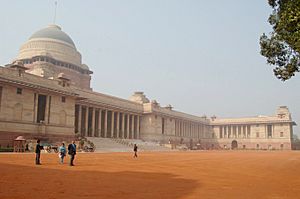
Lutyens' biggest project was helping to design New Delhi, the new capital of India. He worked as the chief architect with Herbert Baker. He blended his classical style with Indian architectural elements. For example, the Viceroy's House has a large dome inspired by Buddhist designs. This huge building has 340 rooms and beautiful gardens. It was the home of the Viceroy of India and is now the home of the President of India.
Lutyens planned New Delhi with wide, tree-lined streets. He also designed the D-shaped market area, which was meant to be a big shopping center. Many of the homes in the area known as "Lutyens' Delhi" were part of his original plan.
In recognition of his work in India, Lutyens was made a Knight Commander of the Order of the Indian Empire in 1930.
War Memorials

After World War I, Lutyens became one of the main architects for the Imperial War Graves Commission. He designed many monuments to remember those who died. The most famous of these are The Cenotaph in London and the Thiepval Memorial to the Missing of the Somme in France.
The Cenotaph was first planned as a temporary structure for a victory parade. But Lutyens' design for a tall, simple monument was so powerful that it became a permanent memorial. He also designed other war memorials, like the Irish National War Memorial Gardens in Dublin.
Other Notable Buildings
Lutyens also worked on Lindisfarne Castle, making changes for its owner. He designed The Salutation, a beautiful house in Sandwich, Kent, built in 1911–1912.
In 1918, he was knighted, becoming "Sir Edwin Lutyens." He also designed Queen Mary's Dolls' House in 1924. This amazing four-story house is a miniature version of a grand home, built to show off the best British craftsmanship. It is now on display at Windsor Castle.
Lutyens was asked to design a new Roman Catholic cathedral in Liverpool in 1929. He planned a huge building with a 510-foot dome. Work started in 1933, but it stopped during World War II. Only the crypt (the underground part) was finished.
International Work
Lutyens' work can also be seen in other countries.
Ireland
In Ireland, he designed the Irish National War Memorial Gardens in Dublin. He also made changes to Lambay Castle and Howth Castle. He designed Tra na Rossan House in County Donegal, which was a holiday home and later became a youth hostel.
Spain
In Madrid, Spain, Lutyens worked on the inside of the Liria Palace. This building was badly damaged during the Spanish Civil War. He also created designs for another large palace, though it was never built.
Later Life
Lutyens married Lady Emily Bulwer-Lytton in 1897. They had five children.
In his later years, Lutyens became ill with cancer. He passed away on January 1, 1944. His ashes were buried in the crypt of St Paul's Cathedral in London.
Major Buildings and Projects
- 1897: Munstead Wood, Surrey
- 1899: Orchards, Surrey
- 1900: Goddards, Surrey
- 1901: Tigbourne Court, Surrey
- 1901: Deanery Garden, Sonning, Berkshire
- 1911: British Medical Association in Tavistock Square, London
- 1912: Great Dixter, Northiam, East Sussex
- 1928: Hyderabad House, New Delhi
- 1929: Rashtrapati Bhavan, New Delhi
- 1930: Castle Drogo, Drewsteignton, Devon
- 1935: The Midland Bank, Manchester
- 1936: Baroda House, New Delhi
- 1936—1938: Villers–Bretonneux Australian National Memorial, Somme, France
Gallery
-
Goddards, Surrey (1898–1900)
-
Hestercombe Gardens, Somerset, with Gertrude Jekyll (1904–1906)
-
Free Church, Hampstead Garden Suburb, London (1908–1910)
-
British Medical Association, Tavistock Square, London (1911)
-
Mells War Memorial, Somerset (1921)
-
Midland Bank Headquarters, Poultry, London (1924)
-
Arch of Remembrance, Leicester (1925)
-
Tower Hill Memorial, Trinity Square, London (1928)
-
67–68 Pall Mall, London (1928)
-
Rashtrapati Bhavan, New Delhi (1912–1929)
-
Castle Drogo, Devon (1911–1930)
-
Architectural model of unrealised design for Liverpool Metropolitan Cathedral (1933)
-
Broughton memorial lodge, Runnymede, Surrey (1930–1932)
-
St Jude's Church, Hampstead Garden Suburb, London (1909–1935)
-
Campion Hall, Oxford (1936)
-
Irish National War Memorial Gardens, Dublin (1932-1940)
Images for kids
-
Lutyens' design for The Cenotaph
See also
 In Spanish: Edwin Lutyens para niños
In Spanish: Edwin Lutyens para niños


